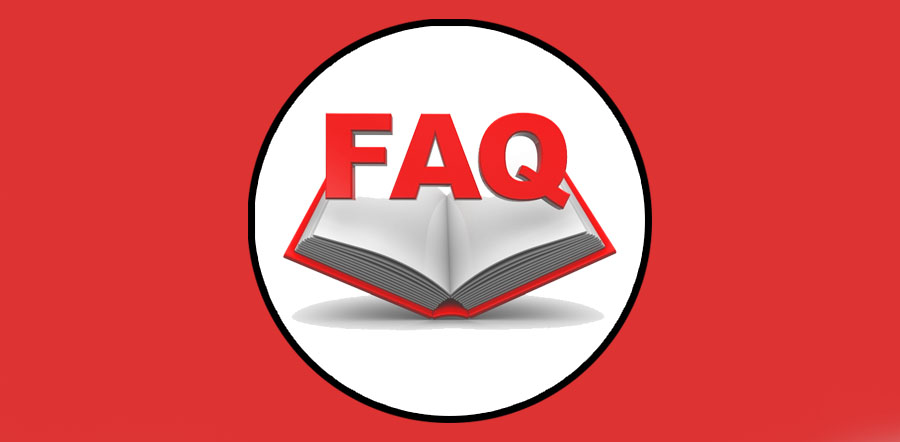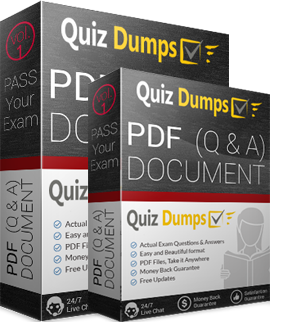SP-SAFe-Practitioner
Guaranteed Success in SP-SAFe-Practitioner Exam
| SP-SAFe-Practitioner Exam Dumps PDF + Practice Test | |||
| Exam: | SP-SAFe-Practitioner | ||
| Exam Name: | Scaled Agile SAFe for Teams SP (6.0) - SAFe Practitioner Exam | ||
| Certification(s): | SAFe Practitioner Certification | ||
| Questions: | 269 Questions Answers | ||
| Last Updated: | May 26,2025 | ||
| Price: | Was: $85 Today: $59 | ||
Check Free Demo Before Buy
$ 49.00 – $ 75.00
Are you looking for real SP-SAFe-Practitioner exam questions ? You’re in the right place!
Pass your Scaled Agile SP-SAFe-Practitioner exam with the latest QuizDumps PDF Questions & Answers.
QuizDumps offers authentic, updated, and expert-verified SP-SAFe-Practitioner braindumps.
Want top scores? Start your prep now with QuizDumps study material.
1: Download Q&A PDF
Buy & Download 100% real, updated and verified exam questions and answers tested and prepared by Scaled Agile experts to pass SP-SAFe-Practitioner exam.
2: Prepare
Prepare for SP-SAFe-Practitioner with 100% confidence using QuizDumps's SP-SAFe-Practitioner exam dumps PDF or SP-SAFe-Practitioner practice exam.
3: Pass Your Exam
QuizDumps's SP-SAFe-Practitioner exam kit prepares you to confidently ace all SP-SAFe-Practitioner questions and pass on your first attempt with top scores.
Comments
Cracked the SP-SAFe-Practitioner exam thanks to QuizDumps! Their PDF was helpful, but the web-based practice tests were a game-changer – so easy to use, unlimited attempts, and the reports were spot on. Highly recommend!
Main points of Scaled Agile SP-SAFe-Practitioner Test
The Scaled Agile Framework (SAFe) Practitioner exam focuses on understanding and applying SAFe principles and practices at different levels. Here are the main points covered, categorized for clarity:
I. Foundational SAFe Concepts:
- SAFe Principles: Understanding and applying the underlying principles of SAFe, such as decentralized decision-making, built-in quality, program execution, and the alignment of goals.
- SAFe Values: Knowing the core values of SAFe, including alignment, built-in quality, transparency, program execution, and unwavering commitment.
- SAFe House of Lean: Understanding the principles depicted in the House of Lean model and how they apply to SAFe.
- SAFe Implementation Roadmap: Knowing the stages and considerations involved in implementing SAFe within an organization.
II. SAFe Configurations:
- Essential SAFe: Understanding the basic framework and its components. This is the foundation upon which other configurations are built.
- Large Solution SAFe: Understanding how SAFe scales to handle very large and complex solutions, involving multiple Agile Release Trains (ARTs).
- Portfolio SAFe: Knowing how strategic themes, funding, and governance are managed at the portfolio level. This includes understanding Lean Portfolio Management (LPM).
- Full SAFe: Comprehending how all the configurations interrelate to create a comprehensive enterprise-wide Agile system.
III. Key Roles and Responsibilities:
- ART Roles: Understanding the roles and responsibilities within an Agile Release Train (ART), including the Release Train Engineer (RTE), Scrum Master, Product Owner, and Agile Team Members.
- Program Level Roles: Understanding the roles at the program level, including the Release Train Engineer (RTE), Product Management, and other supporting functions.
- Large Solution Roles: Understanding the roles involved in coordinating and managing multiple ARTs in a Large Solution SAFe context.
- Portfolio Level Roles: Understanding the roles at the portfolio level, such as Lean Portfolio Management (LPM) roles and responsibilities.
IV. Core Practices:
- Agile Release Train (ART) Sync: Understanding the purpose and mechanics of ART sync meetings.
- Program Increment (PI) Planning: Knowing the process and objectives of PI Planning events.
- System Demo: Understanding the importance and process of demonstrating system functionality at regular intervals.
- Inspect & Adapt: Understanding how to effectively review and improve the process itself during and after each PI.
- Lean Portfolio Management (LPM): Understanding how to manage and prioritize initiatives at the portfolio level.
V. Implementing and Scaling SAFe:
- Lean-Agile Leadership: Understanding the importance of leadership in driving successful SAFe implementation.
- Change Management: Knowing how to address the organizational changes required for successful SAFe adoption.
- Measuring and Tracking Progress: Understanding the key metrics used to track the progress and success of SAFe implementation.
- Addressing Challenges: Knowing how to diagnose and address common challenges encountered during SAFe implementation.
In short: The exam tests your understanding of how SAFe principles, practices, and configurations work together to enable large-scale Agile implementation and delivery. It's not just memorization; it requires a grasp of the why behind the how . Focus on understanding the relationships between different levels and components of SAFe, and how they contribute to achieving business agility.
| Exam Code | Certifications | Questions | Comments | Reviews |
|---|---|---|---|---|
| SAFe-RTE Dumps | Scaled Agile Framework Certifications | 214 Questions | 15 | 5 |
| SAFe-SASM Dumps | SAFe Scrum Master | 60 Questions | 13 | 5 |
| SAFe-APM Dumps | SAFe Certifications | 60 Questions | 12 | 3 |
| SAFe-POPM Dumps | SAFe Certifications | 45 Questions | 10 | 1 |
| SAFe-SGP Dumps | Scaled Agile SAFe Practitioner | 45 Questions | 8 | 1 |
| SAFe-Agilist Dumps | Scaled Agile Framework Certifications | 87 Questions | 6 | 4 |
| SAFe-SPC Dumps | SAFe Practice Consultant Certification | 119 Questions | 3 | 1 |
| SP-SAFe-Practitioner Dumps | SAFe Practitioner Certification | 269 Questions | 3 | 1 |
Why PDF Format?
Our PDF format offers seamless portability across multiple devices, allowing you to study anytime, anywhere. For a more immersive preparation, our Practice Test software replicates the real exam environment. With various testing modes and advanced self-assessment features, our practice exams stand out as the best in the industry.
Is This User Friendly & Easily Accessible on Mobile Devices?
We are committed to delivering precise SAFe for Teams SP (6.0) - SAFe Practitioner Exam questions and answers, accompanied by detailed explanations. At QuizDumps, we value your time and investment, ensuring that every question and answer is thoroughly verified by Scaled Agile experts. Our team consists of highly qualified professionals with years of hands-on experience in the field, guaranteeing reliable and up-to-date exam preparation.
Are All Materials Verified by Experts?
QuizDumps is a trusted name in certification exam preparation, offering [Authentic, Updated, and Real] SP-SAFe-Practitioner Dumps, carefully crafted and verified by IT professionals. If you want to achieve top scores, kickstart your preparation today with our comprehensive SP-SAFe-Practitioner dumps PDF.
What is Our Commitment !
At QuizDumps, we are committed to helping professionals pass their certification exams in the shortest time possible. Our goal is to provide top-quality study materials and exceptional customer support. We continuously enhance our Scaled Agile SP-SAFe-Practitioner exam preparation resources by updating question banks, adding new features, and promptly addressing any reported issues.

